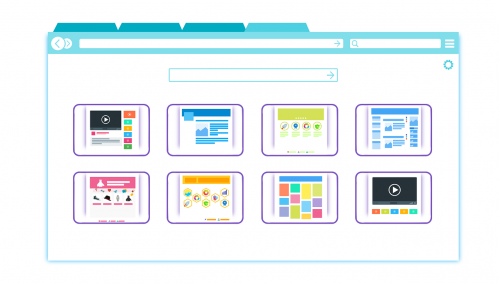Google’s latest update last year will factor page experience into ranking search results in the future. In this article, we explain what Google’s algorithm looks for when evaluating websites.
The integration of page experience into Google’s ranking process was long overdue. After all, if customers have a bad experience on websites, they usually don’t visit them again, and that is logically a signal that search engines like Google can use to evaluate them. Starting in 2021, the “Core Web Vitals”, i.e. the LCP, FID, and CLS, will also be taken into account in the ranking of search results.
As already mentioned, the Core Web Vitals consist of three key performance indicators. The LCP measures the time it takes for the main content of a website to load completely so that it is accessible to visitors. If the load speed is 2.5 seconds or more, changes should be made to improve performance. An LCP of 4 seconds or more is considered to be in serious need of improvement.
There are different ways to improve the LCP, starting with the optimization of image files. These should be optimized for all devices, and care should also be taken to avoid using large images for mobile versions of websites.
In addition, after inserting new content, old code should be removed instead of simply hiding or commenting it out, because superfluous code can also cause websites to take longer to load.
Furthermore, external resources (ads, share buttons, or links to social media posts) can also lead to slower load times. To solve this, external resources should be preloaded.
The FID, or First Input Delay, measures delays that occur when users interact with a website for the first time. At 100ms and above, changes should be made, and at 300ms, it’s identified as having a poor FID. The delays become apparent here in the form of a sluggish website during interactions, i.e. when, for example, something is clicked on and the website reacts slowly to it or not at all. Reducing third-party content is a helpful method to counteract this in most cases. The content of these pages can cause the thread or the main thread to be blocked, which in turn leads to a delay in website response. All applications, plugins, and scripts should therefore be checked carefully.
CLS refers to shifts in the layout of web pages. So, it is necessary to improve the stability of a website, this being its layout. A few methods to help combat web page shifts are checking ads and banners, adding width and height attributes, or also reserving space for content, for example. What is meant by our first tip is relatively clear. Secondly, width and height attributes can be used to set fixed sizes of page elements. This can prevent webpage content from undergoing a change of pixels during loading, which subsequently would lead to a shift in page content. Alternatively, the space for certain page content can be “reserved”.
In summary, we can say that with these new changes, Google continues to work toward its goal and strives to offer visitors a better user experience. At the end of the day, we all benefit from this.












